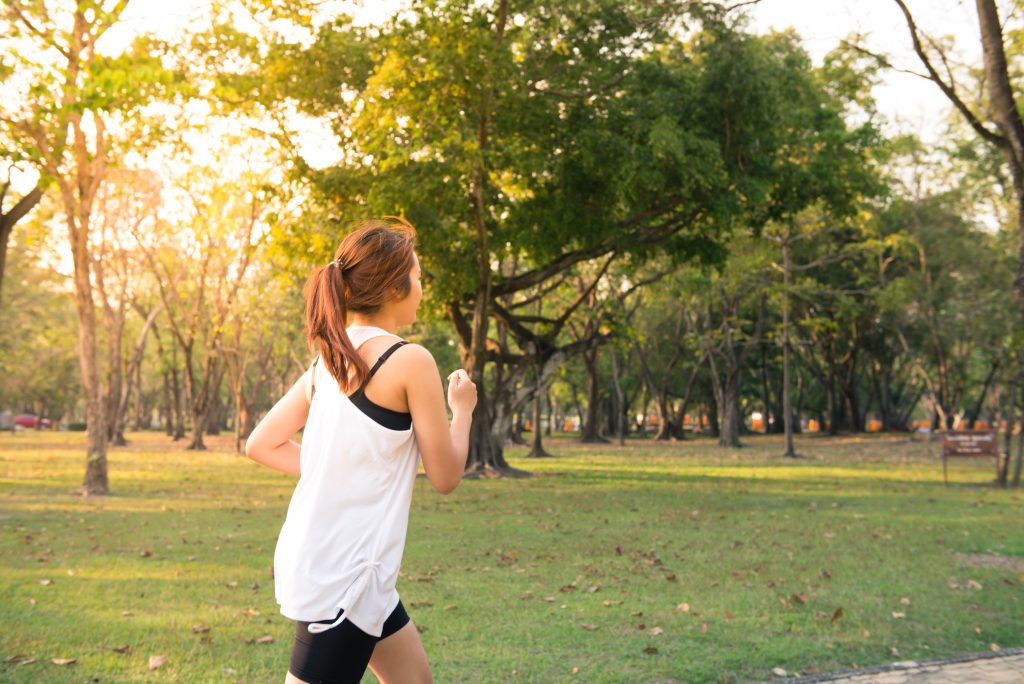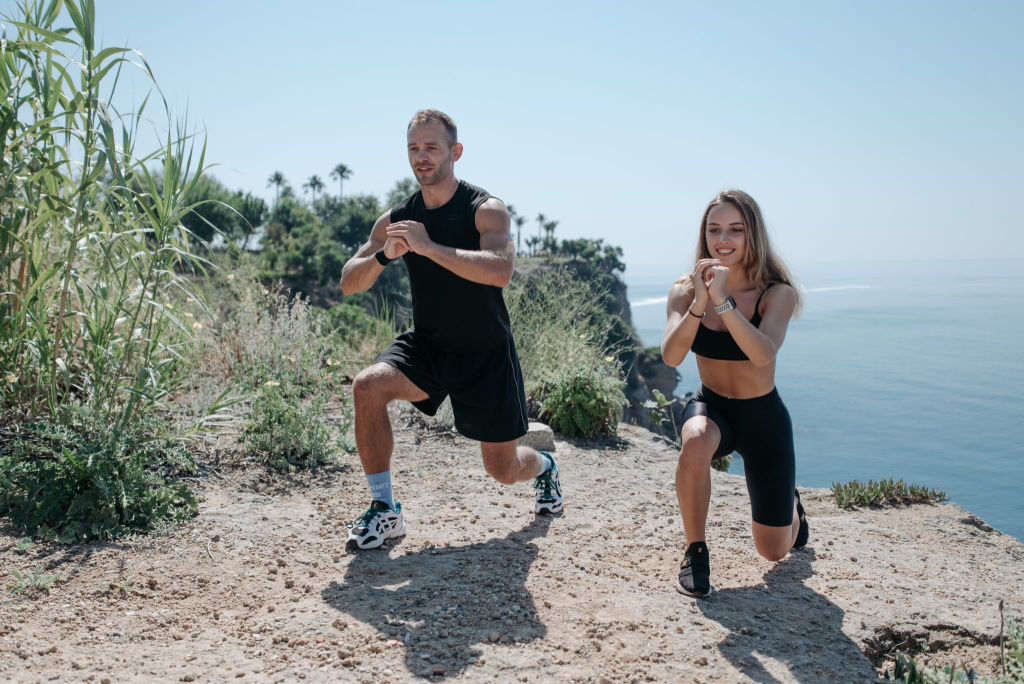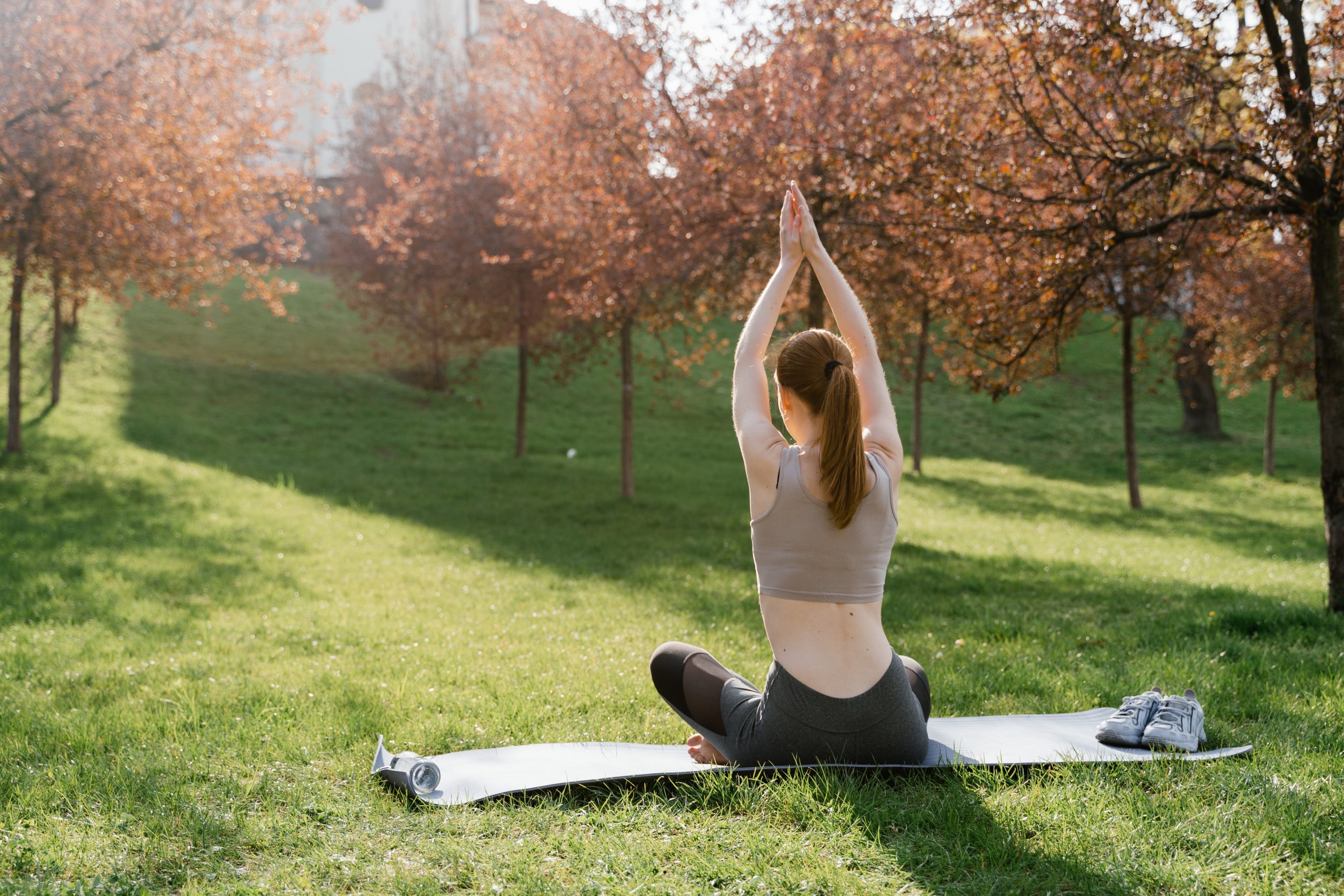As the days get longer, temperatures rise, and the winter blues are conquered, outdoor exercise becomes increasingly attractive. Have you been planning to get more physical activity for a while, but haven’t been able to in recent months? Turn those spring fever feelings into healthy habits and try these 5 workouts for outdoors! All five require little to no cost, as you’ll be using your own body, what you encounter outside, and possibly some simple tools.
Several of these outdoor workouts are also perfect if you have little free time. Additionally, you’ll get a nice dose of fresh air and daylight, which is beneficial for your health and energy. Keep reading to discover these 5 outdoor workouts!
1. Running outdoors remains a fantastic workout
Running is an excellent form of exercise. Not only does it train different muscle groups, but your fitness level can also improve significantly with regular running. Running is not only good for your body, but also for your mind. For example, running produces hormones like endorphins that give you a good feeling, which is why it’s called a “runner’s high”! But running outdoors has even more benefits for your health.
Participants in a study who ran outdoors reported that they felt more energized, less depressed, and more likely to repeat their workout (1). The results of another study suggest that running outdoors leads to better performance than running on a treadmill indoors (2). So, there are many benefits to running outdoors, and it’s also easy to do. You don’t need much, just a decent pair of running shoes, comfortable clothing, and a little bit of courage. If you still want some guidance to build up your running, there are several running apps developed specifically for this purpose. What is holding you back?

2. Jumping rope outdoors
Jumping rope outdoors is another workout that you can easily start with. A jump rope doesn’t have to cost much, and you don’t need much space to jump rope either. Jumping rope is excellent for your fitness level and helps you burn calories and potentially lose weight, as shown in a study of overweight young people (3). Additionally, jumping rope trains many different muscle groups, including your legs (calves, thighs, and buttocks), arms (biceps and shoulders), and abs. Another study suggests that jumping rope is also a good way to promote bone density in your legs (4). The shocks that go through your bones with each landing can make your bones stronger, just like your muscles get stronger when you challenge them.
Results from another study show that jumping rope is also beneficial for your overall balance and coordination. Furthermore, jumping rope is very intense; you will see that your heart rate accelerates in a short time, so you don’t have to do it for a long time to feel the effect. This way, you can easily integrate jumping rope into your daily activities. Ideal if you have little free time, but still need some exercise. Interrupt your home-work session for ten minutes of jumping rope in your backyard, and you’ll be good to go again! You can also jump rope outdoors as part of a broader HIIT workout. Read on!
3. Doing a HIIT workout outside
For those who didn’t know yet, HIIT stands for High Intensity Interval Training. HIIT involves different types of intense workouts that are alternated with periods of low effort. Jumping rope, sprinting or cycling can all be used for a HIIT workout. A HIIT workout usually lasts from 10 minutes to half an hour. A HIIT workout outside could, for example, consist of half a minute of cycling as hard as you can, possibly with your bike in a gear where pedaling is heavier. Then you cycle calmly for a few minutes, barely pedaling. Then you cycle hard again for half a minute, and so on.
You repeat these steps about five times, depending on how much time you have. The same goes for sprinting or jumping rope; you alternate short bursts of high intensity with a few minutes of low intensity, and repeat this several times. You can also alternate between different forms of effort. The goal is to get your heart rate up and then slow it down again. According to some sources, interval training is actually the most ideal for your health (5). This workout is great for you if you don’t get enough exercise due to time constraints. You can experience a lot of health benefits from HIIT workouts in a short amount of time.
A study found that a HIIT workout can produce the same results as a longer workout with continuous, less intense effort (6). Participants also reported enjoying the HIIT workout more. Add the extra benefits of doing a HIIT workout outside – the sunshine, chirping birds, and fragrant flowers, for example – and you have a workout that is not only very effective, but also fun!
4. Doing a circuit training workout outside
Circuit training is another time-saving workout that you can do excellently outside. In many places, there are special outdoor courses for circuit training, but you can also easily find a good spot yourself. With circuit training, you do a series of different exercises, about eight to ten, where you train a different major muscle group, with only a few minutes of rest in between. You can think of push-ups, pull-ups, squats, sit-ups, and so on. With circuit training, you can undergo a whole-body workout in just half an hour.
You can do circuit training in different ways, based on duration or number of repetitions. For example, you do each exercise for a minute before resting for two minutes and moving on to the next, or you do an exercise for 10 reps, rest for two minutes, and then move on to the next. See what works for you! Circuit training is a great way to get a stronger body and better fitness. If you do circuit training outside, you also get the benefits of being outside, such as better health and a better mood (7).

5. Bodyweight workouts for outside
Bodyweight workouts have been around for a long time, but they are still popular. Essentially, you use only your own body weight, plus some everyday objects like a chair or bench. Examples of bodyweight exercises include push-ups, sit-ups, and squats. If you’re not in great shape and dread going to a busy gym full of fit people and complicated machines, a bodyweight workout outside in a quiet spot might be a relief for you. There are various variations possible to make them easier if your muscles are not yet very strong.
For instance, you can do push-ups standing upright against a wall instead of on the ground. One advantage of bodyweight workouts compared to weight exercises is that you usually train multiple muscle groups at once, in a way that is similar to your daily activities. The muscle strength you build can, therefore, be considered more “functional,” unlike weight exercises where you repeatedly strain one muscle group. For example, you’ll notice faster that you can carry groceries, a laundry basket, or your child more easily.
By doing your bodyweight workout outside, you make this form of exercise even more enjoyable for yourself. Want to learn more about the benefits of bodyweight workouts and need inspiration for exercises? Check out this extensive article!
The best outdoor workout is the one you enjoy doing!
The research shows that the more you enjoy a workout, the more likely you are to do it again (8). If you find a workout enjoyable enough to repeat it regularly, you will reap the health benefits more quickly and more extensively. Through repetition, your muscles gradually become stronger and your fitness level improves. The exercises will become easier for you, and seeing results can be motivating. Especially when you combine exercise with good nutrition and healthy juices. If one of the above outdoor workouts starts to bore you, try another from the list for some much-needed variety.
This also keeps your workouts enjoyable. It can also be helpful to schedule your outdoor workout with friends, family, or colleagues. This way, you combine physical activity, being outdoors, and social interaction – all important factors for your physical and mental health! If you do your workout outside when the sun is shining, you’ll also help your body produce extra vitamin D, which is necessary for good health. Vitamin D supports your immune system, bones, and normal muscle function, among other things. So, there are plenty of reasons to do your workout outside this spring!
Sources
Alansare, A. B., Alford, K. L., Lee, S., Church, T., & Jung, H. S. (2018). The Effects of High-Intensity Interval Training vs. Moderate-Intensity Continuous Training on Heart Rate Variability in Physically Inactive Adults. International Journal of Environmental Research and Public Health, 15(7), 1508. https://doi.org/10.3390/ijerph15071508
Coon, J. T., Boddy, K., Stein, K., Whear, R., Barton, J. S., & Depledge, M. H. (2011). Does Participating in Physical Activity in Outdoor Natural Environments Have a Greater Effect on Physical and Mental Wellbeing than Physical Activity Indoors? A Systematic Review. Environmental Science & Technology, 45(5), 1761–1772. https://doi.org/10.1021/es102947t
Jump Rope Training: Balance and Motor Coordination in Preadolescent Soccer Players. (2015, November 24). PubMed. https://pubmed.ncbi.nlm.nih.gov/26664276/
Kong, Z., Fan, X., Sun, S., Song, L., Shi, Q., & Nie, J. (2016). Comparison of High-Intensity Interval Training and Moderate-to-Vigorous Continuous Training for Cardiometabolic Health and Exercise Enjoyment in Obese Young Women: A Randomized Controlled Trial. PLOS ONE, 11(7), e0158589. https://doi.org/10.1371/journal.pone.0158589
Lakicevic, N., Gentile, A., Mehrabi, S., Cassar, S., Parker, K., Roklicer, R., Bianco, A., & Drid, P. (2020). Make Fitness Fun: Could Novelty Be the Key Determinant for Physical Activity Adherence? Frontiers in Psychology, 11. https://doi.org/10.3389/fpsyg.2020.577522
Peserico, C. S., & Machado, F. S. (2014). Comparação entre desempenhos de corrida time trial realizados em pista e esteira. Revista Brasileira De Cineantropometria E Desempenho Humano, 16(4), 456. https://doi.org/10.5007/1980-0037.2014v16n4p456
Seo, K. (2017). The effects of dance music jump rope exercise on pulmonary function and body mass index after music jump rope exercise in overweight adults in 20’s. Journal of Physical Therapy Science. https://doi.org/10.1589/jpts.29.1348
White, M. P., Alcock, I., Grellier, J., Wheeler, B. W., Hartig, T., Warber, S. L., Bone, A., Depledge, M. H., & Fleming, L. E. (2019). Spending at least 120 minutes a week in nature is associated with good health and wellbeing. Scientific Reports, 9(1). https://doi.org/10.1038/s41598-019-44097-3

